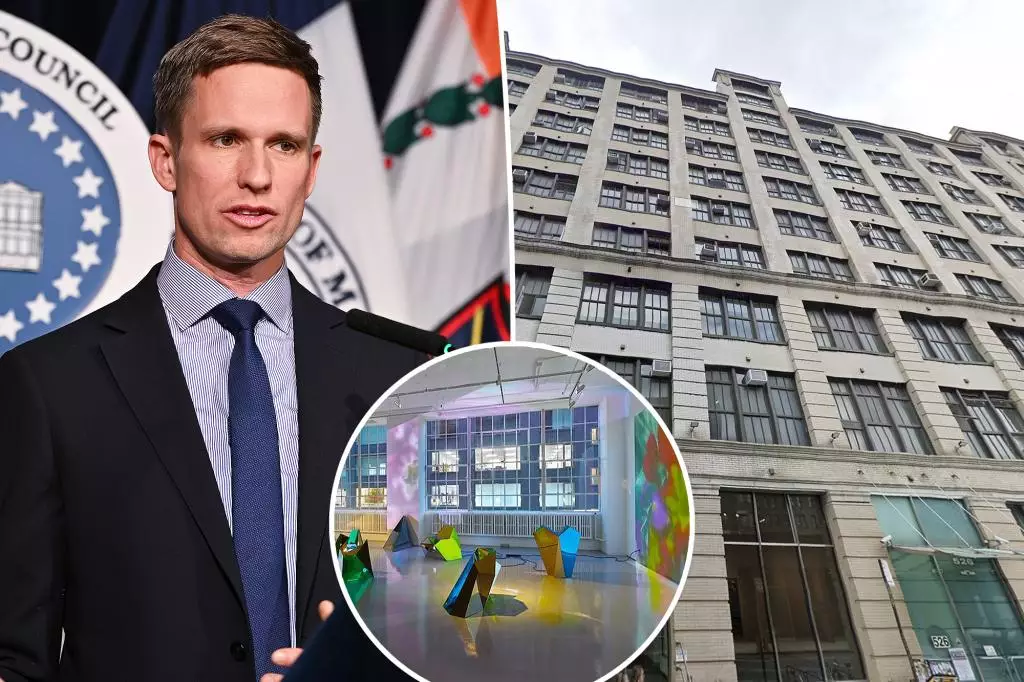The West Chelsea Arts Building, a cherished landmark for New York City’s artistic community, is at a critical juncture as it faces potential sale. Founded in 1993 by philanthropist Gloria Naftali and her husband Raymond, this expansive 400,000-square-foot hub has long provided affordable studio space for artists and galleries. With its rich artistic history housing influential figures such as Ross Bleckner and Louise Fishman, the building stands as a vital element of the cultural landscape in Chelsea. However, the recent announcement of its upcoming sale has ignited concerns among tenants and local leaders alike, who fear that the shift in ownership could spell disaster for many established artists.
The loss of Gloria Naftali in September 2022 marked a significant moment for the arts community, particularly as her vision for the West Chelsea Arts Building came under threat. The building is now listed at an impressive $170 million by her estate, stirring fears of rising rents and possible displacement of the current tenants. Many have expressed deep concern over whether any new owner would uphold the character and purpose of this beloved space, particularly since it has long served as a sanctuary for creativity. Local elected officials, including City Council member Erik Bottcher and U.S. Representative Jerry Nadler, have rallied to protect the building, penning a letter to the Raymond and Gloria Naftali Foundation in hopes of reconsidering the sale.
The Community’s Response
Residents and local leaders assert that losing the West Chelsea Arts Building would create a significant cultural void. Their concerns are echoed in their letter, which emphasizes the livelihood of approximately 200 tenants whose artistic practices contribute to the vibrancy of New York City’s art scene. As Bottcher highlights, “The potential sale poses a serious threat…many of who have established deep roots in the community.” It remains evident that the emotional and cultural resonance of the building extends far beyond its physical space, leading to collective efforts to preserve its legacy.
Interestingly, discussions revolving around Gloria Naftali’s will unveiled a wish for the building to maintain its character as primarily a home for artist studios and galleries. Although the will does not impose a legal obligation, it highlights the importance of maintaining the building’s original purpose. This request for meetings to “explore all possible avenues to safeguard this vital resource” is merely one facet of the community’s response to the looming threat of displacement.
Within the broader context of New York City’s affordability crisis, many fear that gentrification can shape the future of artistic expression in a place that has served as an “artist’s haven” for over four centuries. Bottcher’s statement pinpoints a crisis that not only endangers individual artists but also jeopardizes the city’s status as a nurturing ground for creativity. The pressures of real estate on artistic communities are palpable, as the rise of costs often pushes talent away, leaving behind hollow spaces that lose the vibrancy that defined them.
Derek Wolman, an attorney representing Naftali’s estate, has acknowledged the financial strain on the Foundation, noting that they lack adequate resources to manage the building. While he assures the current tenants that there is no imminent threat to their leases, uncertainties remain about the long-term stability of their homes within this community. This perspective underscores the delicate balance between the realities of maintaining such a significant piece of real estate and the invaluable cultural contributions that artists provide.
As discussions continue, it is crucial for the voices of artists and community members to be amplified in the decision-making process. The future of the West Chelsea Arts Building is a testament to the importance of collective advocacy; by preserving spaces like this, we honor the artists who have shaped our cultural dialogue. The battle to protect the building reflects a broader challenge that cities face: how to house creativity in an environment often dictated by financial imperatives.
The fate of the West Chelsea Arts Building remains uncertain, but the collective effort of the community to preserve it highlights a unique moment in the ongoing narrative of art and gentrification. As local leaders stand firm in their plea for a reconsideration of the sale, the future of this cherished arts hub lies in the hopeful interweaving of strategic advocacy and the unwavering spirit of artistic determination.

